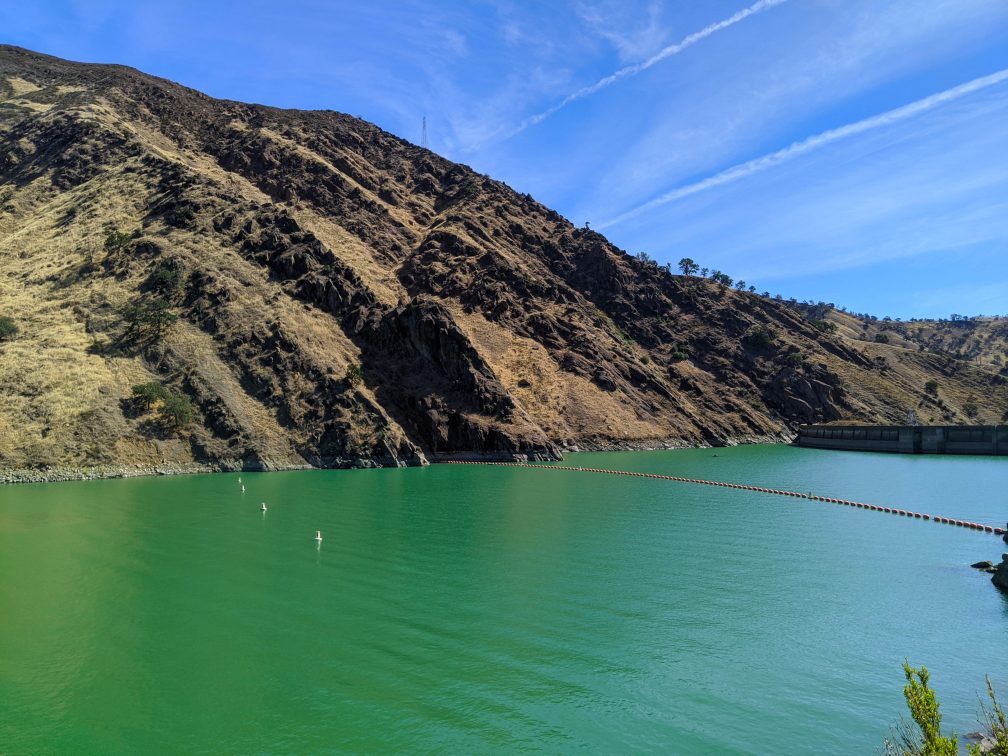Freediving in the lake can definitely be a fun and bring lots of enjoyment, however it can also be challenging. Here we discuss main aspects of freediving in lakes and share the best preparation tips. How should you prepare your mindthe? your weight belt? your freediving computer?
Main factors of freediving in a lake
Freediving in the lake can be very enjoyable because the swell conditions in lakes are generally better than in the ocean. Less wind and less swell may attract a lot of freedivers who might prefer to train in the lake and have very stable conditions between their freediving training sessions.
Lake water however has a few common characteristics which important for freedivers:
- The lake’s water is less mixed than the ocean water, so it may have more clear layers of thermocline. Thermoline is a steep temperature gradient, when water temperature changes significantly over the a few meters as depth increases.
- It has more particles especially in spring – mid-summer, when lake’s water is full of growing green microflora and as a result lakes water has less visibility (in general) than ocean water. In addition to bacteria that naturally occurs in the water, in some countries waters are polluted from sewage intake or from agricultural treatments, so it is recommended to consult with local information before diving there. Visibility can be also affected by algae blooms which happens mid-summer to spring, and that is when the surface and top layer of the lake is covered, filled with blooming green flora.
- Water pressure is different than in the ocean. Typically in the lake there is a fresh water which 1000 kg/m3, while in the ocean it is about 1030 kg/m3. So we have a density change of 3% which is noticeable when it comes to equalisation especially at 35+m depth.
How to prepare:
So how should freedivers prepare to diving in lakes. Most importantly we should do the following:
- Adjust your weight belt weight to accommodate for less density of water. For example, wearing 5mm wetsuit I take 4.5kg of weight for the salt water diving, while I take only 3kg (less weight) for lake freediving training.
- You can’t rely on the display of your watch anymore. So freediving computer with depth alarms instead of conventional diving watch when you dive in the lake.
- Adjust your freediving computer like DiveBud for fresh water. This way you will be notified about depths at exact times when you reach them and your dive logs will reflect the right depths that you’ve reached. Otherwise the error of depth reading may reach a few meters when you freedive deeper than 50 meters. When using DiveBud you can also change your dive log after the diving to reflect the real density of the water.
- Prepare your mind for the darkness. It can be hard to stay calm when you can not see anything. For example, in Australia I was diving in Burrinjuck lake and already at 11 meters depth there was a complete darkness, so despite holding my bright yellow line right in front of my eyes I could see absolutely nothing. Visualise the darkness when you are preparing for your freedive, close your eyes as you descend, relax and get used to not seeing anything.
- Be aware that is is easier to freedive in the lake than in the ocean, know and adjust your limits. For example, for 50 meters dive in the lake, you can only reach 48.5 meters in the ocean.
- Hardest part is to get used to thermocline, especially if you dive without a mask. As water touches your face, eyelids are very sensitive to temperature change and a dramatic change of water temperature may cause hiccups, involuntary spasms of diaphragm. Water googles or a mask can help you stay calm and cover sensitive parts of your face to prevent hiccups.


One thought on “Art of Freediving in a lake”
Comments are closed.